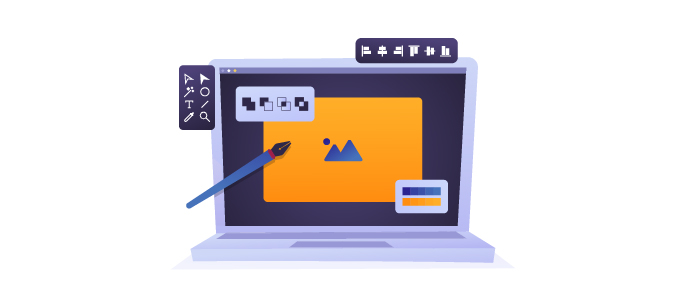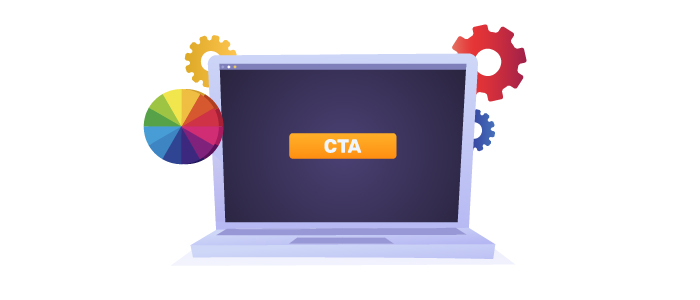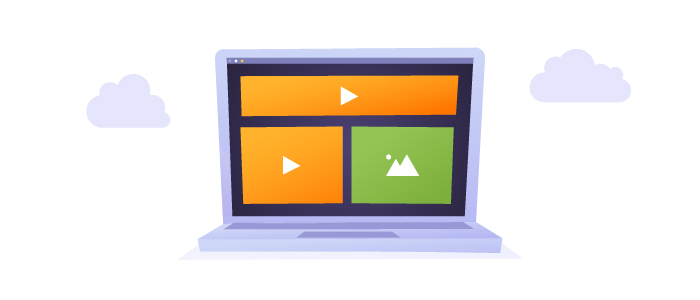How to Design Ad Banners that Drive CTR
Banner ads are the oldest type of online advertising. They have been around for more than 20 years and come in various shapes and formats, such as JPG, GIF, or HTML5 driving forward the banner design technique.
Besides their flexibility, they are also affordable, easy to measure, and if used correctly, highly effective. And so, they quickly became a standard in every company’s advertising strategy.
But they also have downsides – with so many brands using banner ads, their quality is often poor. And users easily learned to hate banner ads, especially intrusive and irrelevant ones.
Yet, before we get caught up in talking about banners, let’s ask the most important question.
Table of Contents
What Is Design, and Why Is It Important?

When we say, “to design,” we can refer to:
- Creating a logo in Illustrator;
- Creating a building plan;
- Split testing a website to improve UX;
- Coming up with a new model of shoes.
All of these actions can be called design. But they can also be broken down into categories.
- User design;
- Graphic design;
- Urban design;
- Industrial design;
- Interior design.
In the end, the term “design” is just a big basket that holds many things that have no clear relationship to one another, except for the fact that someone, somewhere, calls them design.
Yet, design as a discipline refers to planning the creation of a product or service to improve the human experience concerning a specified problem.
The more qualitative the design is, the better it will solve the problem and provide more value.
How Does This Apply to Banner Design?
Lately, banners have taken a wild turn.
Instead of giving users value, it usually spams them to insanity. And that’s because many brands ignore a very important factor in banner advertising:
Context.
The best thing you can do when creating a banner advertising campaign is to know your audience. By delivering your ads to the right people, you increase your conversion rate and improve your brand reputation and awareness.
It is generally known that banner advertising is frequently utilized in the digital world in two main contexts: prospecting and remarketing.
Prospecting refers to individuals who have never visited your website and may not even know your brand. In addition, retargeting users who have visited the page but did not convert. Consider this information while developing your ads and composing ad content to know what you target.
To learn more about your audience, ask yourself: Who are they? Which age group do they belong to?
Additionally, when placing your ads, you can target your audience for the selected location or weather. Schedule your ads to appear when people are more likely to buy. The idea is to conduct your analysis and ensure you cater to your audience, not all users in general.
Popular Ad Sizes and Positions
As we previously mentioned, there are numerous banner sizes and formats. And it’s only natural for some to perform better than others.
The most popular and successful ad sizes are:
- 728×90;
- 300×250;
- 160×600;
- 300×600;
- 320×100;
- 320×50.
Besides these sizes, some websites allow responsive banners (Header & Sticky), which adjust to the user’s screen and generate the best CTR.
Yet, when it comes to banner design, the most important aspect to consider is the hierarchy of the information and/or elements displayed.
- Company Logo—In most cases, you’ll want your logo to be the first thing the user notices. This will help them easily identify your brand, and if they’re a customer, they will most likely check out the rest of the content;
- The Value Proposition—This is the most important item on your banner. It should be as visible as possible but not as visible to gauge your eyes. The thing that your users should care about is what you can do for them;
- Call-to-Action—This is a text or button that invites users to click. Phrases like “Learn more,” “Get started,” or “Watch now” are great examples. The call-to-action should be a clear focal point of the ad.
Choosing the Right Color
The top candidate for a color palette should be the one you use for your brand. However, there are instances when it would be better to go with a different palette based on your campaign’s objective and overall theme.
It is well known that each color has one (or more) meaning(s), and based on the context, some fit way better than others. So let’s run down some of the most common colors and see how you can use them:
- Red is a powerful color, and it is best used with discretion. It is commonly associated with love and passion, and many avoid it because of this. But if other brands are avoiding it, using it might help you stand out from the crowd;
- Yellow is the color of the sun. It symbolizes optimism, happiness, and sometimes intellect, hazards, or warning signs. However, some shades of yellow can look cheap, but that feeling can be easily countered using great design;
- Orange blends the power of red and the optimism of yellow. It is usually well suited for youthful and energetic brands and best avoided for luxury, traditional businesses;
- Green has two very common meanings that are quite paradoxical. One is nature and environment; the other is finance and wealth. Usually, they are differentiated through shade – a brighter green symbolizes growth and vitality, while a darker shade of green represents wealth and abundance;
- Blue is one of the most commonly used colors, perhaps due to its versatile qualities. It conveys reliability and trustworthiness, all while expressing the authority and officialdom of organizations;
- Purple is usually associated with royalty or nobility and is best used on luxurious brands, but it can also express a certain amount of mystery;
- Brown is usually used in organic food or beauty products. It is a simple color, and it can suggest that your brand has better things to care about than superficial colors;
- Black is perhaps the most powerful color of all. While many brands use it, only a few use it properly. Black represents power, luxury, sophistication, and exclusivity on one hand and death, evil, and mystery on the other;
- White represents a product’s simplicity in both form and function—just look at Apple. White is the best choice when your brand is about minimalism, simplicity, and transparency.
Crafting an Effective Call-to-Action

The call-to-action is the message that encourages your audience to take action.
It is important for your CTA to be specific and to set the right expectations for the user regarding what happens after they click it.
1. Use Power Words
Power words are words that can influence users’ opinions or emotions. And they’re not random. They are based on scientific research, psychology, and genetics.
SIDENOTE. We won’t cover the explanation behind every power word (because we’d end up turning this post into a research paper), but you can read in detail about power words on enchantingmarketing.com.
When it comes to power words, they can be grouped into 3 main categories:
Persuasive Words
…that convince users to take action:
1. New – reimagined from the ground up, re-invented from the inside out, innovative, groundbreaking;
2. Free – Everybody wants free stuff. So, offering your users free samples, a bonus on a purchase or a free e-book on sign-up will make them think twice before scrolling past your ad;
3. Imagine – Imagination is a powerful thing. The moment you start imagining what your life would be like with a certain product – a better car, a larger TV, a smarter phone – you’re more likely to make that purchase;
4. Because – Giving people a reason to do something triggers an automatic response. And it doesn’t even have to be a good reason.
In 1978, Ellen Langer, a professor of Psychology at Harvard, conducted an experiment testing the power of the word “because.” He had people request to jump the line at a copy machine, using 3 different excuses:
“Excuse me, I have 5 pages. May I use the photocopier?”
“Excuse me, I have 5 pages. May I use the photocopier because I have to make copies?”
“Excuse me, I have 5 pages. May I use the photocopier because I’m in a rush?”
And the results were quite surprising.
With the first phrasing, only 60% of the people accepted the request. But when a reason was included, the acceptance rate jumped to 93% for the 2nd phrasing and 94% for the 3rd;
5. Instant – The power of instant gratification is huge, and this concept is hardwired in our DNA. We are not designed to think long-term.
This feeling is also backed by the “pleasure principle”. We become tense and anxious if we have a certain need or wish (and it doesn’t have to be physiological) that we don’t satisfy quickly.
And that’s why instant gratification is such a powerful concept, especially in marketing;
6. How to – Users love learning to do something new. That’s why learning a new skill or discovering something new feels so good. Well, as long as we care about that particular skill or information.
You didn’t think that the countless “How to…” posts and videos taking over the internet were just a coincidence, did you?
Emotional Words
…that appeals to people’s feelings.
The best way to appeal to people’s emotions is by considering the 8 primary emotions provided by Robert Plutchik:
- Joy – love, tender, devoted, seductive, ecstatic;
- Trust – trustworthy, proven, absolutely research-backed facts;
- Fear – banned, threat, abusive, failure, anxious;
- Surprise – jaw-dropping, mind-blowing, remarkable, terrific, astonishing;
- Sadness – heartbroken, lovesick, resentful, grief-stricken, shame;
- Disgust – outrageous, vulgar, obscene, ridiculous, repulsive;
- Anger – rage, irritating, annoying, tantrum, grumpy;
- Anticipation – little-known, inspirational, charming, forgotten, discovered.
Sensory Words
…that help people experience your content.
- Visual – sparkling, enormous, glowing, gloomy, crooked;
- Tactile – fluffy, rough, smooth, sticky, hairy;
- Auditory – buzz, humming, deafening, earsplitting, loud;
- Taste & smell – rotten, juicy, stale, bitter, yummy;
- Motion – to grab, blown away, paralyzed, to crawl, hurry.
Power words are unimaginable, well… powerful. But to craft a persuasive CTA, you must know how to help your users. So put yourself in their shoes. How can your product improve their life? What pain will your product take away, literally or metaphorically?
Once you have answered that question, you’ll know exactly what you need to offer.
2. Be Aware of FOMO
We keep swiping on Tinder because the next person might be the love of our life. We check our Facebook feed while hanging out with friends so that we won’t miss out on something more interesting. We text while driving so we won’t be left out of an “important” conversation.
The Fear of Missing Out is the consuming sensation that everyone around you knows something, owns something, or does something, and you’re missing out on it. It has become a driving force behind the decision-making process in today’s world simply because nobody wants to be left out.
If all your friends plan to go on a trip, you’ll probably also go. Even though you don’t think it’s a very good idea. Pure social pressure and the fear of missing out will drive you to do it, regardless of how you feel about it—in most cases.
But Be Careful.
Manipulating people into buying something isn’t exactly ethical. Especially considering that extreme cases of FOMO can lead to depression. But there are ways of using it to encourage people to take action without putting too much pressure on them.
Limited offers. Bonus or free guide on sign-up.
Statements that instill a sense of urgency or offer something to the user in return for clicking your banner are great at converting—as long as what you provide is useful.
SIDENOTE. FOMO is a much more complex issue than it seems at first glance. Writing an ad that states, “All your friends signed up,” will be perceived as a scam and will most likely drive people away. Therefore, trying to take advantage of it to increase your conversions will most likely hurt your business. But CTA’s that instill urgency and ensure people of no risks are known to impact CTR greatly.
You can read more information on FOMO in Psychcentral’s blog post.
3. Keep It Short
A CTA shouldn’t take up more than a few words. Don’t use it to attract users – that’s what your value proposition is for.
Your CTA should direct users to their next action and correctly set their expectations.
Animated vs. Static Banners
An animated banner offers a completely different experience than a static banner. You can deliver more information better and wow users with slick animations.
But Are They Better than Static Images?
It’s hard to tell.
Because it depends on the campaign you’re running, you need to consider your campaign objectives, messages, and budget before deciding whether to run a static or animated ad.
The statistics show that animated banners had a lower CTR than static ads. But this doesn’t necessarily mean that a static banner is better. If your animated ad is too long or displays the call to action too late, it will fail to convert.
Users spend most of their time below the fold, so you need a quick and simple animation to get their attention and have them take action.
That’s why static banners tend to perform better – they deliver all the information at once, and users will decide whether they’re interested or not in a matter of seconds.
But there are also downsides to animated banners.
Mind Your File Size

The file size is an important banner property because it affects the page’s loading speed. According to Google AdWords, static banners tend to have smaller file sizes than HTML5 banners, which can vary between 50 and 150 kB.
And you’ll have to choose between loading speed and image quality. While a static banner designed for mobile marketing might lose quality, an HTML5 banner will remain responsive across all devices.
But no matter the format you choose, make sure you stay below the file size limit of the platform you’ll use it on.
Final Thoughts
Designing a banner isn’t an easy job. But it’s not impossible.
There are many factors to consider—information hierarchy, color palette, words, phrasing, dimensions, and style. But if you know your audience, you’ll have a much easier time deciding on the right option.
However, the best advice that we can give (which doesn’t apply just to banner design) is this:
Always run tests. Never rely on someone else’s research on a certain topic, as that research might be biased or faulty. Split-test your campaigns, see what works best for your product, and choose the option that produces the best results.